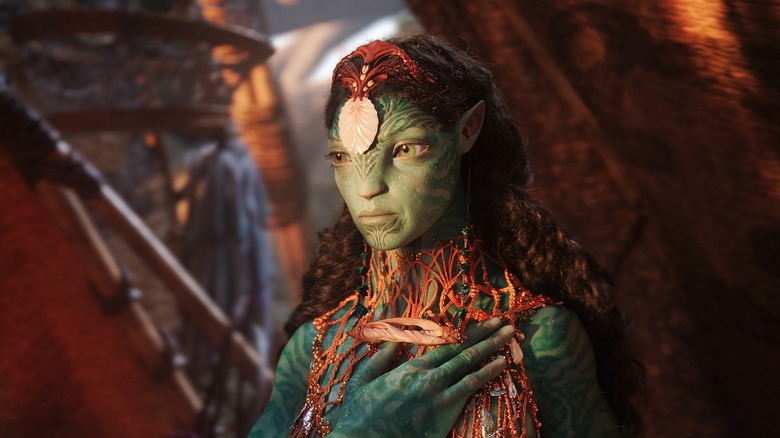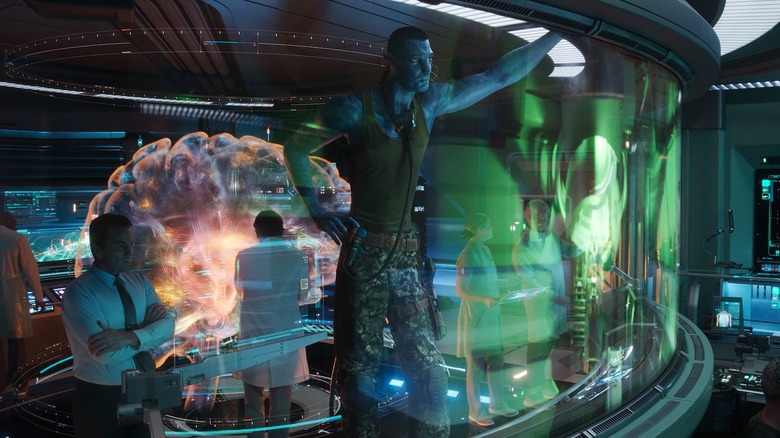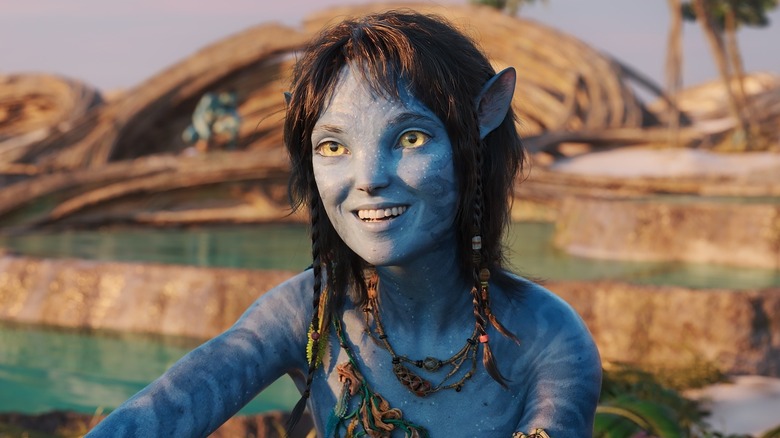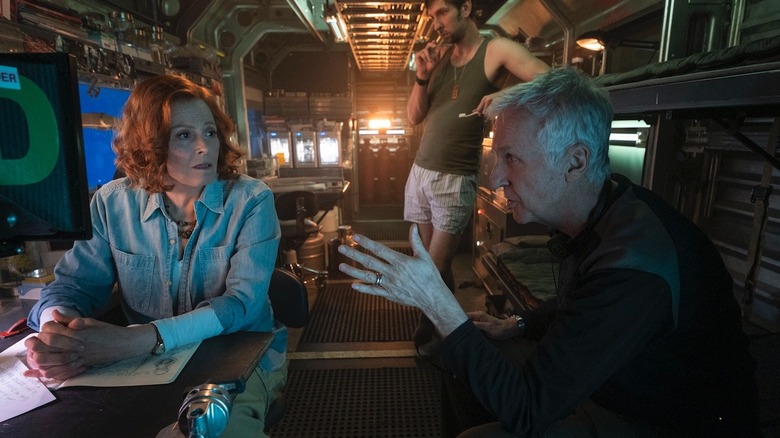Avatar: The Way Of Water's High Frame Rate Is Awful And Distracting And This Can't Be The Future Of Movies, Right?
Fans have been waiting for "Avatar: The Way of Water" for almost a decade and a half now. James Cameron's first "Avatar" film was a marvel of technical innovation when it came out and while whether or not you liked the story depended on personal preference, there is no way to argue with how visually beautiful it was.
The new film continues the story of Jake Sully (Sam Worthington), a human marine in the future who has his consciousness permanently encased in his Na'vi avatar, his wife Neytiri (Zoe Saldaña), and their growing family of children, both adopted and biological. The humans who cause so much destruction on Pandora are back, and they're trying to take resources again, bringing strife to the moon world, and hunting Jake.
There are huge battles, gorgeous underwater scenes, and some spectacular CG and motion capture work. There is also, however, the use of high frame rate (HFR), something you may have seen before in films like "The Hobbit" trilogy or "Gemini Man." If you're not familiar with it, a standard film has 24 frames per second, which gives you a more cinematic aesthetic. HFR has 48 frames per second, which makes things sharper and more realistic — like you're watching a play.
That sounds great in theory, but in practice, it can be very disconcerting. In "The Way of Water," this HFR isn't the standard. It switches back and forth, sometimes within the same scene, and it's so jarringly awful that it takes away from everything else.
James Cameron is 'hacking' faster frame rates
Not every theater can support HFR, but director James Cameron has a "hack" for that, as Variety reported in October. Cameron spoke at the Busan International Film Festival in South Korea, where he explained that they're using the HFR to "improve 3D where we want a heightened sense of presence, such as underwater or in some of the flying scenes." He said that the lower, more standard 24fps is better for scenes with people speaking. He explained the hack this way:
"Can theatres support variable frame rate, switching back and forth within the movie between 24fps and 48fps? The answer is no, they just run it at 48fps. In any part of the scene that we want at 24fps, we just double the frames. And so, they actually show the same frame twice, but, but the viewer doesn't see it that way. And so, we just we're essentially using a simple hack to use the high frame rate platform that already exists."
In theory, that sounds great. I want to be very clear in saying that I appreciate Cameron's innovations. I think it's important to try things out and experiment, particularly in an artistic format. Sometimes things take getting used to. I used to hate 3D. It made me nauseated. It's better now, though one early scene in the movie made me close my eyes so I could keep the popcorn in my body. Still, it's better than it used to be.
None of the 3D advances would have worked without experimentation and a few dicey screenings. It's just that the HFR moving back and forth is incredibly distracting, and it completely took me out of the film and any enjoyment I might have gotten from it.
You're asking a lot of our eyeballs
If you saw one of the showings of "The Hobbit" films that used HFR, you may have noticed that certain scenes (the one that comes to mind is Bilbo in the cave with Gollum) where it looks like you're watching a stage play or an old BBC low-budget production. HFR is very different from what we're used to, and perhaps that's the issue. Maybe seeing it more would change our perceptions. Right now, however, it can be migraine-inducing, and switching back and forth makes it far worse.
We're already dealing with the jarring move between CGI characters and environments and the military scenes with humans. It's beautiful, the things they do with the Na'vi, but it's not quite the same thing, and it's noticeable. Add in the frame rate back and forth, and it feels impossible for your eyes to track and adjust. Sometimes the shift happens in the same scene, so while your eyes are refocusing and you're wondering why it looks different, you miss out on a story point or dialogue. Film is supposed to be immersive, and this made it less so for "The Way of Water."
Not ready for primetime
It's particularly noticeable in the battle scenes, in which James Cameron is a master of crafting. In one shot, we're watching a few Na'vi run across the screen in a standard way but in the next, the humans appear to be sped up, like someone changed the playback speed on a YouTube video. Have you ever been on a Zoom or Skype call where there is a lag, and then everything is double time for a few seconds to catch up to the live conversation? It happens constantly here. Add in Sigourney Weaver playing her own character's 14-year-old daughter, trying to keep names (which are often mumbled) and creatures straight, too many leads, the 3D, and the fact that half my butt had gone numb (the runtime is three hours and 10 minutes), it took me right out of the action.
Having said all that, it's a first shot across the bow, this frame rate business. It's relatively new tech, which means it takes time to perfect. I'm glad that, with everything the industry is going through now, people are still willing to take chances on stuff like this. I would just add that this isn't perfect by a long shot, and it's not ready for implementation in other films until there is another shift in the process. I hope this is better in the next sequel because the migraine I've had for the last 18 hours shows no sign of slowing down.
"Avatar: The Way of Water" is currently in theaters.



